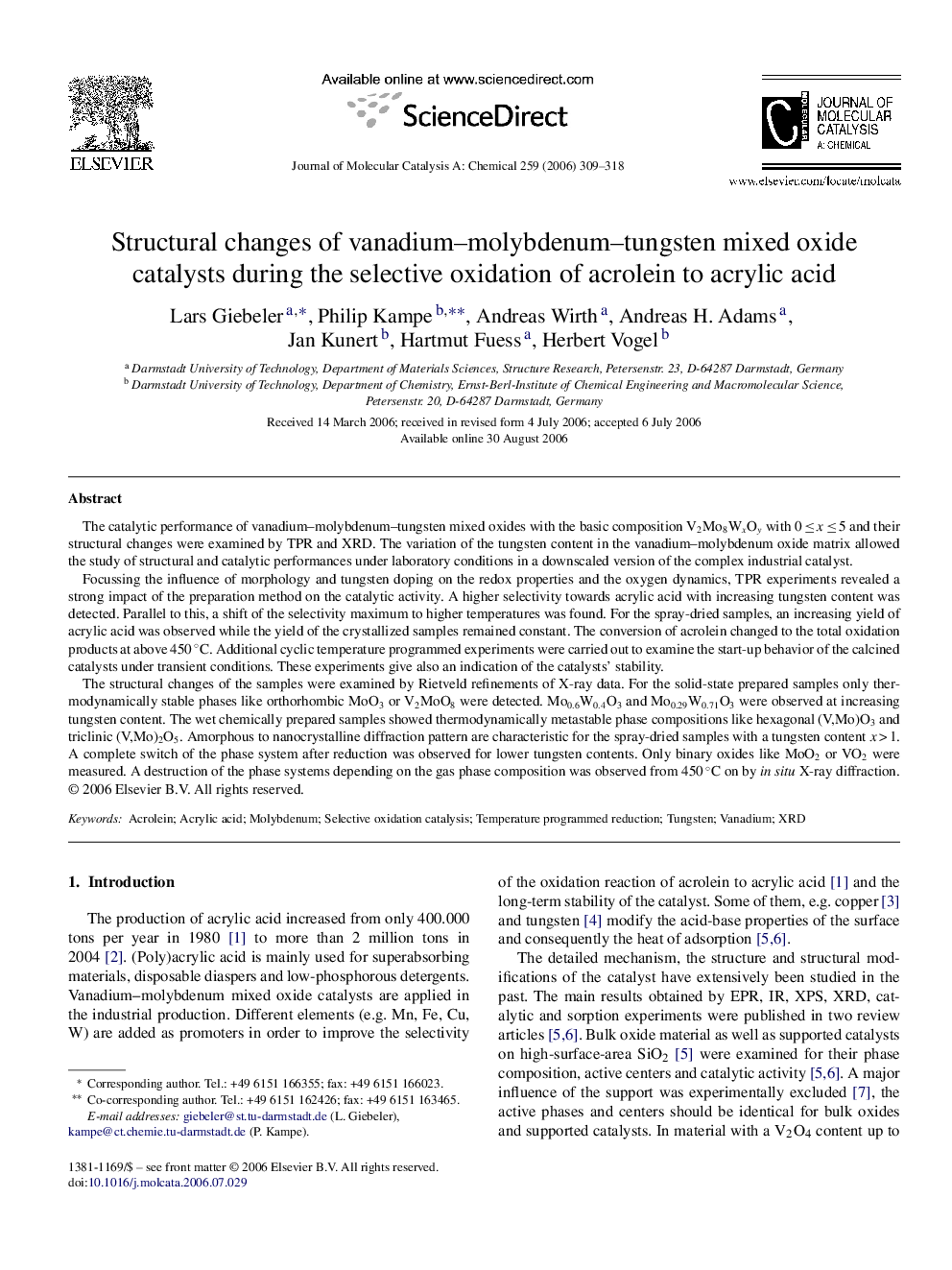| Article ID | Journal | Published Year | Pages | File Type |
|---|---|---|---|---|
| 68461 | Journal of Molecular Catalysis A: Chemical | 2006 | 10 Pages |
The catalytic performance of vanadium–molybdenum–tungsten mixed oxides with the basic composition V2Mo8WxOy with 0 ≤ x ≤ 5 and their structural changes were examined by TPR and XRD. The variation of the tungsten content in the vanadium–molybdenum oxide matrix allowed the study of structural and catalytic performances under laboratory conditions in a downscaled version of the complex industrial catalyst.Focussing the influence of morphology and tungsten doping on the redox properties and the oxygen dynamics, TPR experiments revealed a strong impact of the preparation method on the catalytic activity. A higher selectivity towards acrylic acid with increasing tungsten content was detected. Parallel to this, a shift of the selectivity maximum to higher temperatures was found. For the spray-dried samples, an increasing yield of acrylic acid was observed while the yield of the crystallized samples remained constant. The conversion of acrolein changed to the total oxidation products at above 450 °C. Additional cyclic temperature programmed experiments were carried out to examine the start-up behavior of the calcined catalysts under transient conditions. These experiments give also an indication of the catalysts’ stability.The structural changes of the samples were examined by Rietveld refinements of X-ray data. For the solid-state prepared samples only thermodynamically stable phases like orthorhombic MoO3 or V2MoO8 were detected. Mo0.6W0.4O3 and Mo0.29W0.71O3 were observed at increasing tungsten content. The wet chemically prepared samples showed thermodynamically metastable phase compositions like hexagonal (V,Mo)O3 and triclinic (V,Mo)2O5. Amorphous to nanocrystalline diffraction pattern are characteristic for the spray-dried samples with a tungsten content x > 1. A complete switch of the phase system after reduction was observed for lower tungsten contents. Only binary oxides like MoO2 or VO2 were measured. A destruction of the phase systems depending on the gas phase composition was observed from 450 °C on by in situ X-ray diffraction.
Graphical abstractFigure optionsDownload full-size imageDownload as PowerPoint slide
